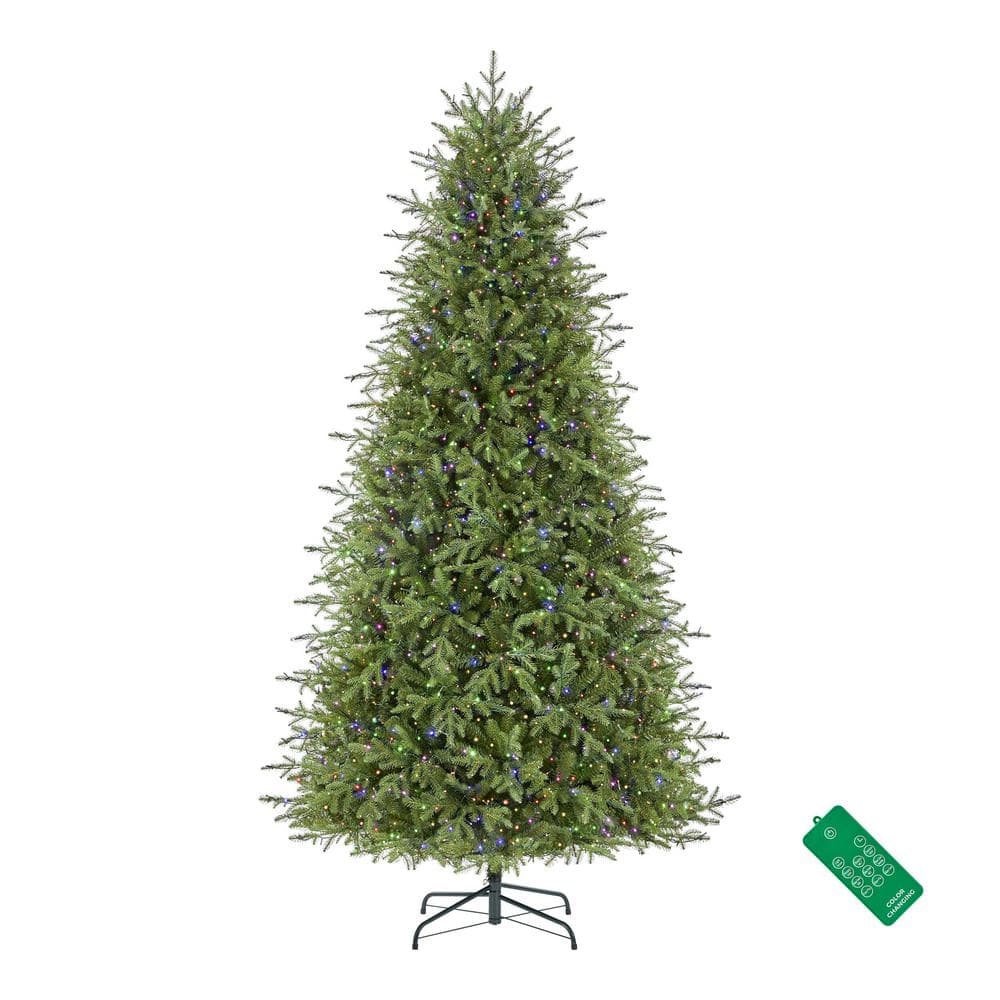Home Decorators Collection 9 ft. Pre-Lit LED Grand Duchess Balsam Fir Artificial Christmas Tree
9-ft. balsam fir artificial tree with memory wire branch tips. 3,400 color-changing LEDs deliver sparkle and shine. Continuous-on technology ensures a bright, merry Christmas.
Turn your space into a winter wonderland with this 9 ft. Grand Duchess Balsam Fir Christmas Tree. It features 3,400 color-changing LEDs. The memory wire branch tips are perfect for hanging your favorite ornaments.
- Balsam fir artificial tree serves as a focal point of your holiday decor
- Memory wire branches provide an easy-to-shape tree
- Artificial Christmas tree measures 9 ft. high
- Energy-efficient LEDs offer lasting performance
- 3,400 lights for maximum brightness
- Remote control lets you switch between 10 light functions
- To Feature steady lights activate Home Mode: press the light show and the clock button at the same time
- Once in Home Mode tree will flash multi color twice then press the desired lighting function of the 10 featured on the remote
- The tree’s 10 function lighting capability is controlled by the use of the remote control provided, by phone or tablet
Additional information
| Actual Tree Height (ft.) | 9 |
|---|---|
| Base diameter (in.) | 62 |



by Ryan
Absolutely love the tree and so does everyone that has seen it! 10/10! We purchased the 9ft and it is absolutely beautiful. One thing i don’t understand is why they ship it in “store mode”. Lets say there are 500 Home Depots in US and each of them receive 10 of these trees, now 4500 customers have to swich their tree from “store mode” to “home mode”. If you are like me and don’t read instructions you wont be able to get the tree to turn off! But seriously great tree and I higly recommend!
by Melissa
This tree is beautiful in person! The white light twinkle setting is my favorite. I read many reviews complaining about not being able to get it out of demo mode; to get out of demo mode, hit timer button & light show button, hold until it flashes. You won’t regret this purchase.
by John
I bought this before it went popular and it exceeded my expectations! Super simple to put up my myself (I got the 9ft) and no fluffing needed! It’s beautiful and we all love the options to do both lights since I’m a warm white light person and my husband likes colored. My kids are split on that. Haha Anyways, highly recommend! So glad I bought this!
by Krissy
It’s a gorgeous tree, set up is easy, lights are beautiful…… but when turning tree on at night it’s insanely bright. I love sitting by my tree and watching movies with my kids but this makes the room too bright. I’m really considering returning it for this reason alone but not sure if another tree will have the same realistic look but with a softer light.
by Laura
I was afraid this tree would be too small but it’s the perfect size for my space. I absolutely love the lights! They are so bright and sparkle! It’s very light weight making it so quick and easy to set up. I can’t wait to decorate it. Shout out to the homedepot employee who had to go above and beyond to get one of the last two that was stored on a high shelf in the garden area. He was friendly and smiling the entire time & believe me, it wasn’t easy to take down. Highly recommend this tree!
by Cristina
Such a beautiful tree. Im glad that I made the purchase. The only thing that bugged me was that the branches didnt spring into place once attached like its supposed to. Overall, the setup was quick and easy.
by Michael
This tree exceeded my expectations. We literally put it up in less than 15 minutes and it needed very little fluffing. This is by far the best tree that i have owned.
by Leslie
I was looking for a replacement tree as I threw out my old one after many of the bulbs went out. I am very picky about my Christmas tree and want it to look realistic. This tree is beautiful even right out of the box but looks better after fluffing. I love the variety of light settings with twinkle is my favorite one so far. One disappointment I have is there is no way to plug in my treetopper without running a cord through the tree. I’m looking forward to decorating it soon.